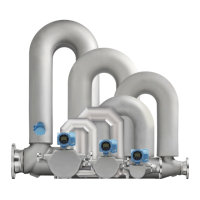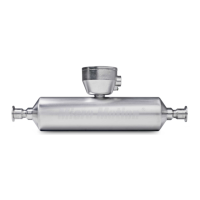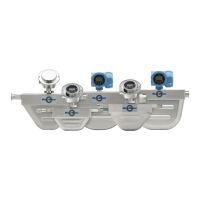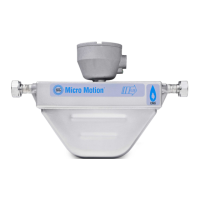3 Transmitter power and I/O wiring
Topics covered in this chapter:
•
Options for wiring
•
Connect 4-wire cable
•
Connect the 9-wire cable
3.1 Options for wiring
The wiring procedure you follow depends on which electronics option you have.
Wiring procedures by electronics optionTable 3-1:
Electronics option Wiring procedure
Integral transmitter The transmitter is already connected to the sensor. No wiring is
required between sensor and transmitter. See the transmitter in-
stallation manual for wiring the power and signal cable to the
transmitter.
Extended electronics The electronics are separated from the sensor by an extender
and must be attached as described in Section 2.9. There is no wir-
ing required because the physical connection includes the elec-
trical connection.
MVD
™
Direct Connect
™
There is no transmitter to wire. See the MVD Direct Connect
manual for wiring the power and signal cable between the sensor
and the direct host.
Integral core processor with re-
mote transmitter
The core processor is already connected to the sensor. Connect a
4-wire cable between the core processor and transmitter. Refer
to Section 3.2.
Remote core processor attach-
ed to transmitter
Connect a 9-wire cable between the sensor and the transmitter/
core processor. Refer to Section 3.3, as well as the Micro Motion
9-Wire Flowmeter Cable Preparation and Installation Guide.
Remote core processor sepa-
rate from transmitter – double-
hop
• Connect a 4-wire cable between the core processor and
transmitter. Refer to Section 3.2.
• Connect a 9-wire cable between the sensor and the core pro-
cessor. Refer to Section 3.3, as well as the Micro Motion 9-
Wire Flowmeter Cable Preparation and Installation Guide
DANGER!
Make sure the hazardous area specified on the sensor approval tag is suitable for the
environment in which the sensor will be installed. Failure to comply with the requirements for
intrinsic safety in a hazardous area could result in an explosion.
Transmitter power and I/O wiring
22 Micro Motion ELITE

